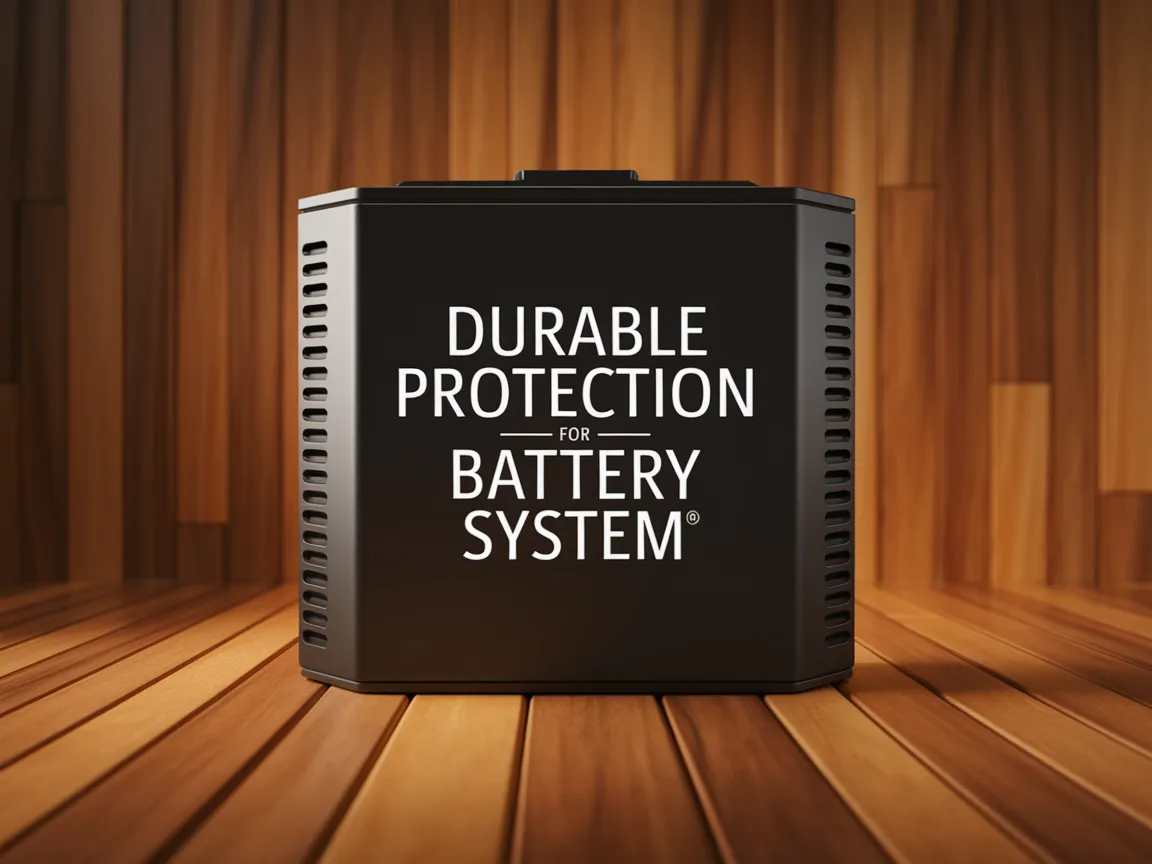Battery Pack Enclosure Design: Protection and Performance Essentials
A battery pack enclosure is the protective housing that contains all battery components. It must withstand physical impacts, environmental hazards, and contain thermal events.
Without this barrier, battery cells risk short circuits from water ingress or physical damage. Enclosures prevent catastrophic failures in electric vehicles and energy storage systems.
This article explores why enclosures are non-negotiable for safety. We’ll examine their critical functions and material science behind durable designs.
Why Battery Pack Enclosures Are Non-negotiable
Contents:
Every battery pack enclosure serves as the primary defense layer between volatile electrochemical cells and the external world. Without robust containment, lithium-ion batteries pose significant safety hazards during operation.
Commercial viability demands enclosures meeting stringent international standards. They transform laboratory energy storage into field-deployable power solutions.
The Critical Role Of Enclosures in Battery Systems
Battery enclosure design directly determines system safety margins and operational lifespan. These structures manage simultaneous mechanical, thermal, and electrical threats.
Effective battery packaging isolates individual cells while providing structural support. This dual function prevents internal short circuits during vibration events.
Preventing catastrophic failure scenarios
During thermal runaway, enclosures contain flames and direct 800°C+ gases away from occupants. Venting mechanisms activate at 10-15 psi to prevent explosive ruptures.
Impact-resistant battery pack housing withstands 50G crash forces in electric vehicles. This containment stops punctured cells from igniting adjacent units.
Enabling safe commercial deployment
Regulations like UN 38.3 mandate enclosure firewalls lasting ≥15 minutes during cell failure. This critical containment window enables passenger evacuation.
Proper battery casing design allows manufacturers to achieve UL 2580 certification. This standard validates crashworthiness and electrical isolation capabilities.
Essential Functions Of Battery Pack Enclosures
Battery pack enclosure design serves three critical protection roles. These structures must simultaneously guard against physical damage, electrical hazards, and thermal runaway events. One crucial component inside these enclosures is the BDU (Battery Disconnect Unit), which helps in managing electrical safety.
Mechanical Protection Requirements
Robust battery packaging absorbs kinetic energy during accidents. Effective designs withstand 50G impacts while maintaining structural integrity.
Impact resistance for collision scenarios
Automotive battery casings endure crash forces exceeding 10kN. Reinforcement ribs and crumple zones distribute impact energy away from cells.
Vibration damping during operation
Constant 5-200Hz vibrations degrade connections without proper damping. Elastomeric mounts isolate battery packs from chassis resonance frequencies. This level of vibration can also affect electrical components if not addressed properly. Designing for busbar vibration resistance is crucial to ensure reliability and longevity in electrical systems.
Electrical Insulation Fundamentals
Battery enclosure design prevents stray current paths. Dielectric barriers maintain minimum 1000V/mm isolation between components.
Cell-to-cell isolation
Conductive battery pack housing requires insulation layers. Mica sheets or ceramic coatings prevent cell container shorts during compression.
Ground fault prevention
Double-wall designs with air gaps interrupt potential circuits. UL requires 500VAC dielectric testing for all high-voltage battery casings.
Containment Of Thermal Events
Thermal runaway presents the most severe enclosure challenge. Proper battery casing contains fires for critical evacuation time. In such scenarios, effective thermal runaway gas venting pathways become essential for safely managing the release of pressurized gases. These pathways help prevent catastrophic failures by directing gases away from sensitive areas.
Flame retardation pathways
Aramid honeycomb cores and intumescent seals slow flame spread. Materials must achieve UL94 V-0 rating with less than 10 seconds afterflame.
Gas venting management
Directional vents channel 1000°C ejecta away from occupants. Burst discs activate at 15±3 psi to prevent explosive ruptures.
Environmental Threats Battery Enclosures Must Withstand
Battery pack housing battles constant environmental assaults. Exposure tolerance defines operational boundaries and lifespan. Effective thermal management is crucial in this context, as it influences both module level and pack level performance. Balancing thermal management approaches can significantly enhance overall battery efficiency and longevity.
Ingress Protection (IP) Requirements
IP ratings quantify enclosure defense against solids and liquids. EV battery casings typically require IP67 or IP69K certification. Proper electromagnetic interference (EMI) shielding techniques are also crucial in ensuring the performance and safety of these enclosures. Enclosure EMI shielding techniques help protect sensitive electronic components from external electrical noise that can disrupt functionality.
Water submersion challenges
Seals must withstand 1m immersion for 30 minutes. Double O-ring grooves and compression limiters prevent seal extrusion during deep water events.
Dust penetration prevention
IP6X demands complete dust exclusion. Labyrinth seals and gasket compression over 30% achieve micron-scale particle blocking.
Chemical and Corrosion Resistance
Harsh chemicals attack battery construction materials. Material selection prevents degradation in aggressive environments.
Road salt exposure in EVs
Chloride ions necessitate aluminum alloys or stainless steel. Anodized layers below 15μm thickness fail salt spray tests within 500 hours.
Industrial chemical contact
Coolants, oils, and cleaning agents degrade polymers. Chemical resistance charts guide thermoplastic selection for specific fluid exposures.
Extreme Temperature Tolerance
Battery casings experience -40°C to 85°C operational swings. Material properties must remain stable across this range.
Thermal expansion management
Aluminum expands 23μm/m·°C versus steel’s 12μm/m·°C. Differential expansion requires sliding joints in multi-material battery pack construction. Proper optimization of thermal interface material thickness plays a crucial role in managing these expansions. Balancing material thickness can enhance thermal conductivity and overall performance in multi-material assemblies.
Material brittleness thresholds
Below -20°C, some polymers reach glass transition. ABS fractures at 5J impact energy when cold versus 50J at room temperature.
Also See: Deciding Venting Pressure for Gas Vent Selection
Material Selection for Battery Pack Housing
Battery casing material dictates performance tradeoffs. Engineers balance weight, cost, and protection requirements. Additionally, considering serviceability in pack design leads to more efficient maintenance and longer product longevity. A well-designed pack not only protects the battery but also facilitates easier access for repairs and replacements.
Metallic Enclosure Solutions
Metals dominate high-performance battery pack casing design. Their isotropic properties simplify structural analysis.
Aluminum vs steel tradeoffs
| Parameter | Aluminum 6061-T6 | Steel DP600 |
|---|---|---|
| Density | 2.7 g/cm³ | 7.8 g/cm³ |
| Tensile Strength | 310 MPa | 600 MPa |
| Cost/kg | $3.50 | $0.80 |
Weight-to-strength ratios
Aluminum provides 120 kN·m/kg specific stiffness. Steel offers better dent resistance at 1/3 material cost but doubles mass. When considering enclosure manufacturing, the choice between sheet metal and castings becomes essential, as both materials present unique benefits and challenges. The decision can significantly affect durability, weight, and cost.
Polymer-based Casing Options
Thermoplastics enable complex battery enclosure geometries. Injection molding produces integrated features unreachable with metals. This versatility is especially important in the context of lithium batteries, where safety and efficiency are paramount. Understanding thermal runaway mechanisms in lithium batteries can help mitigate risks associated with battery overheating.
Engineering-grade thermoplastics
PPA resins withstand 200°C continuous exposure. 40% glass-filled nylon achieves 15 GPa stiffness at half metal weight. When selecting materials for applications involving heat management, thermal interface material selection guide play a crucial role. A comprehensive thermal interface material selection guide can help ensure optimal performance and longevity in your designs.
Composite material innovations
Sheet molding compounds (SMC) offer Class-A surfaces. Carbon fiber SMC reaches 20 GPa modulus while being radar-transparent.
Material Certification Factors
Battery pack construction materials require validation. Certifications confirm performance under real-world conditions.
Flammability ratings (UL94)
V-0 rated materials self-extinguish within 10 seconds. HB materials burn at >76mm/minute and fail automotive standards.
Temperature rating validation
Continuous thermal aging tests run 3000 hours at 105°C. Materials showing >50% property retention receive automotive approval. Effective thermal management is crucial in ensuring material longevity and performance. Good design principles focus on optimizing heat dissipation and material selection to enhance durability in automotive applications.
Closing Thoughts
Battery pack enclosures serve as the unsung heroes of energy storage systems. They provide mechanical integrity, electrical isolation, and thermal management while withstanding environmental extremes from -40°C to 85°C.
Modern enclosures now integrate smart features like strain gauges and thermal sensors, pushing beyond basic protection. Material innovations like carbon fiber composites offer 60% weight reduction over steel while maintaining impact resistance.
For deeper dives into enclosure design strategies or material selection tradeoffs, explore our technical resources at Battery Pack Design. We cover everything from IP67 sealing techniques to advanced thermal interface materials.
Remember – your enclosure isn’t just a box. It’s the critical interface between battery cells and the harsh real world. Proper design considerations for BDU enclosures ensure they effectively protect the components inside while managing thermal and mechanical stresses. Focusing on these aspects can significantly enhance the durability and reliability of the system.
Additional Resources for You:
- ISO/TC 22/SC 37 – Standards for Electrically Propelled Vehicles
- Battery Enclosure – an overview | ScienceDirect Topics
- Design optimization of battery pack enclosure for electric vehicle | Structural and Multidisciplinary Optimization
- Complete Guide for Battery Enclosure – KDM Fabrication
- Designing and Managing Custom Battery Pack Plastic Enclosures



